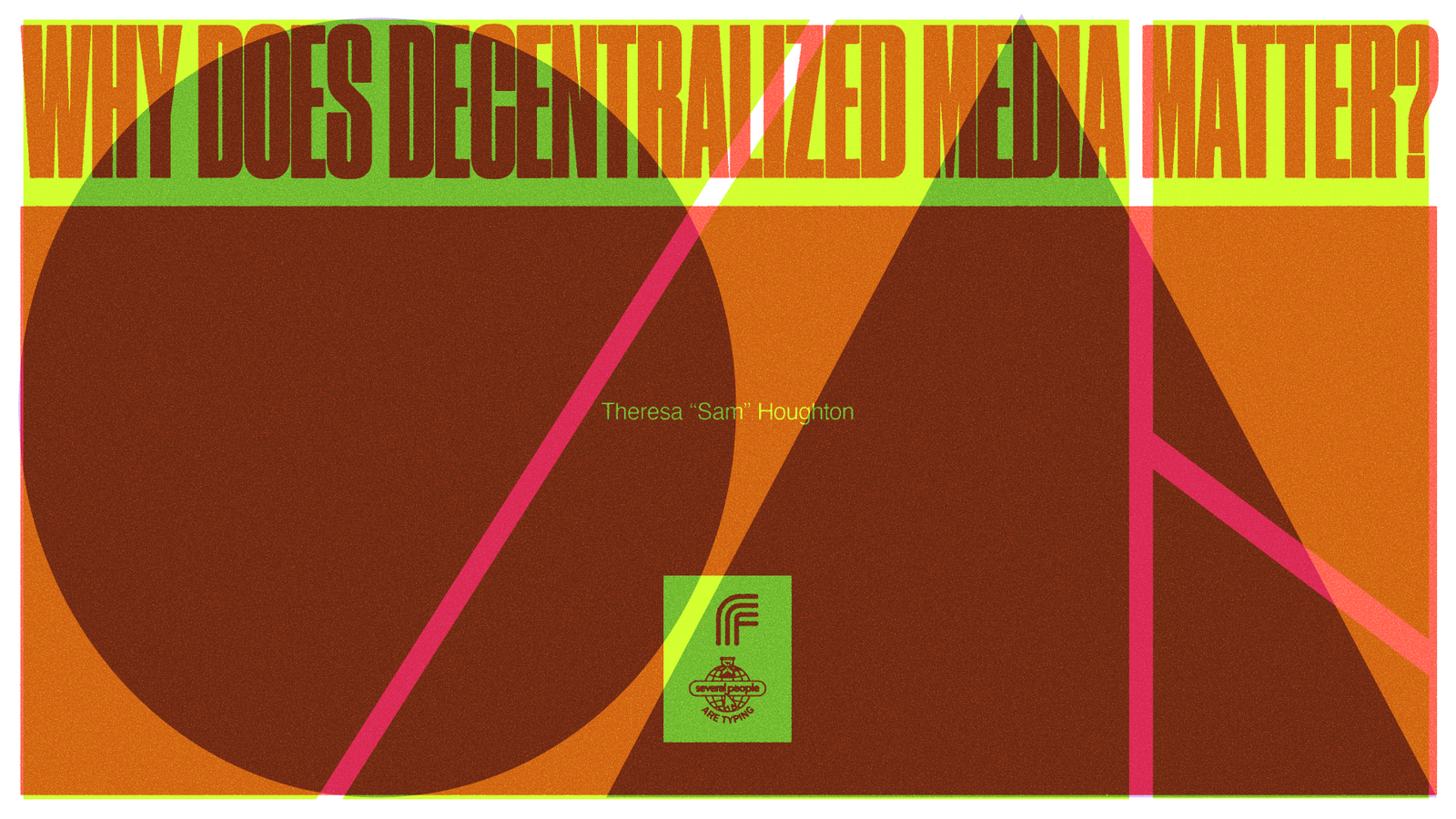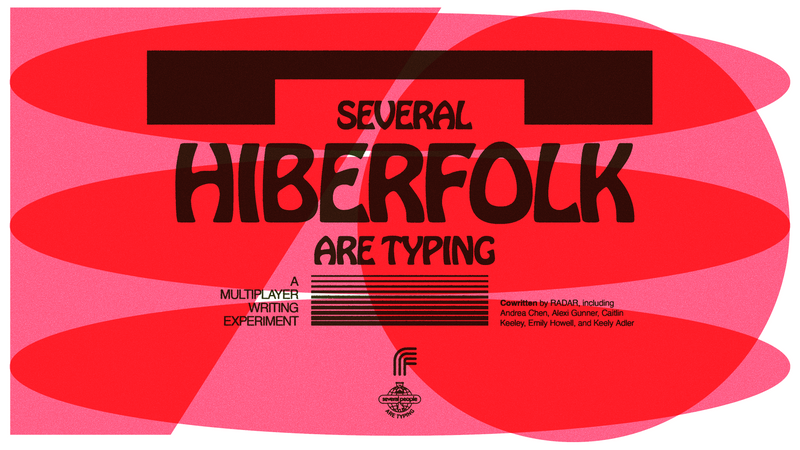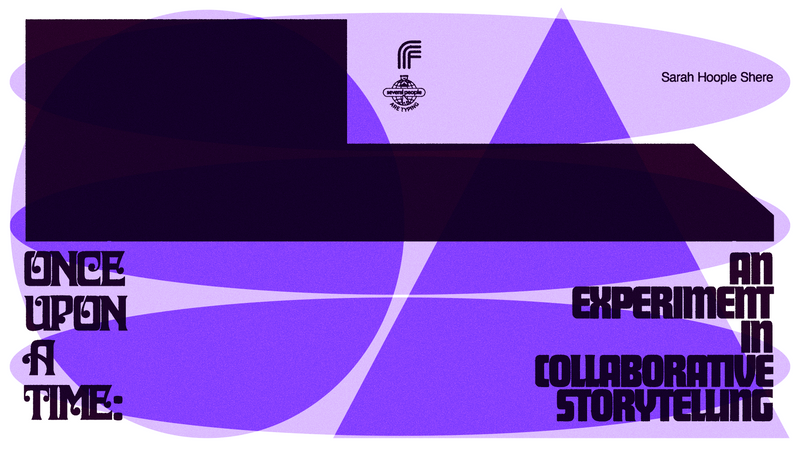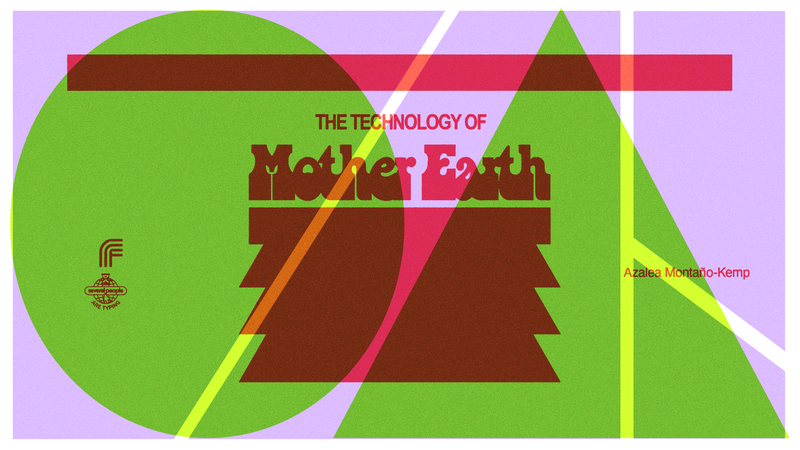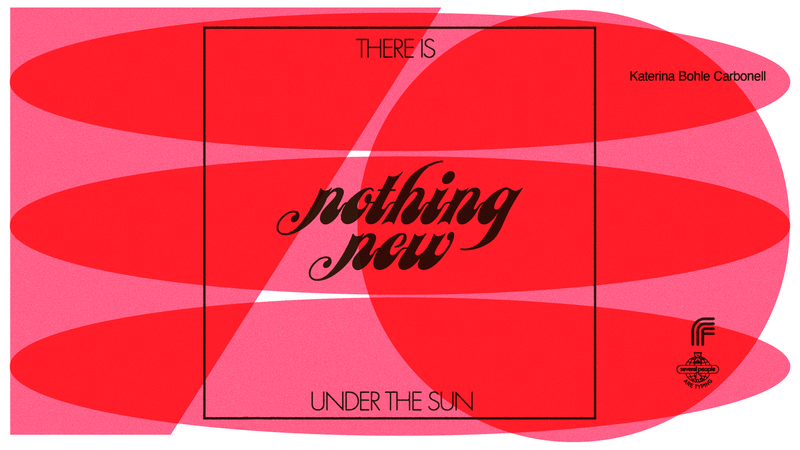Centralized media claims to be populated by myriad sources with diverse ideas and viewpoints. In reality, a mere handful of platforms and corporations control how information flows across the landscape.
And the phenomenon isn't restricted to much-maligned social networks. Google's algorithm does much the same thing, serving up content that fits the search giant's prevailing definition of "valuable" and "authoritative." Big media outlets have taken notice and mastered the art of playing the algorithm in their favor. Just 16 companies, acting as the puppet masters of 560 media brands, dominate search results to the tune of 3.7 billion collective clicks per month.
Employees of these media conglomerates are often expected to crank out large quantities of content that conform to whatever formula commands the most attention. Because big media companies profit mostly from advertising and affiliate commissions, maintaining high search traffic is imperative. The "big 16" are essentially engaged in an ongoing search war, with clickbait headlines and sensational content as the weapons of choice. Content that attracts the most visitors or goes viral becomes the new gold standard for production.
It's a familiar pattern. As author and legal scholar Tim Wu points out in The Attention Merchants, centralized media has used unappetizing—and often misleading—tactics to grab the public's attention since the days of penny papers in the late 1800s. Although the mechanism of distribution has evolved over the decades, the playbook has remained largely the same: A few big companies commission, produce, and syndicate the vast majority of media the public consumes. Locked in a perpetual battle for dominance and advertising dollars, they're driven to produce more of what draws people back. The endless cycle of imitation has little tolerance for originality and stifles media that exemplifies creativity, originality, and insight.
But a more insidious implication underlies centralized media's perpetuation of the banal: When a handful of platforms dominate the public's attention, they also dominate the public narrative. Such power can be exploited to manipulate minds and actions—with results that range from the ridiculous to the horrific.
Media is instrumental in shaping culture, and thus, behavior. Whoever controls the public media narrative wields the power to define and perpetuate cultural norms. The public is largely complacent toward or ignorant of the fact that they allow a handful of corporations to shape their ideas, perceptions, and preferences every time they open Facebook or do a Google search. Whether or not this worldview is beneficial is of little concern to media conglomerates as long as the money comes in.
Far from being trustworthy curators, today’s centralized entities operate to satisfy investors and stakeholders—not users. By burying content that doesn’t attract a level of attention that appeases advertisers, these companies have conditioned users to want media that fits a specific framework, one that routinely discourages the efforts of small, independent creators.
Many such creators start out with dreams of making media that helps others or adds beauty and meaning to the world. But to achieve that, their media must be seen, and they must be compensated at a level that sustains their creative efforts. Consequently, creators get sucked into a perpetual cycle of contending with algorithms and chasing viral trends as they try to produce media that drives traffic.
And no matter how hard they work, there's always the chance of losing their livelihoods to algorithm changes or the capricious whims of platform moderators—both digital and human. These platforms hold sovereign power to accept or reject topics for publication, remove posts they deem offensive, or ban users without explanation. As a result, unique, innovative media becomes the casualty of centralized control.
These consequences can be seen in how YouTube's algorithm undermined creators in recent years. The algorithm drives 70% of viewership, which provides no small incentive to create content in line with its often-elusive preferences. Videos with the highest view counts and longest view times get recommended, seen, and compensated most often, so creators attempting to generate income from their channels have little choice but to make more of what's already popular. To create unique, unusual, or experimental media that interests only a handful of viewers could be disastrous for their financial wellbeing.
Even creators who start out with the intention of cracking the algorithm for personal gain rather than creative expression aren't guaranteed success. Recent changes designed to enforce prohibitions on inappropriate content lacked the nuance to protect creators who hadn’t violated guidelines from losing visibility and ad revenue. With no clear idea of what media was "safe" to produce, creators couldn’t know whether their next video would be their last. Larger channels with more resources continued to come out on top, as their sizeable subscription bases ensure the attention that prompts YouTube to promote their videos.
Meanwhile, the public remains passive consumers at the behest of media conglomerates: happy spoon-fed recipients of a narrative controlled by those with the money and resources to play the algorithms and win the most attention.
Decentralized media changes the relationships between creators, consumers, and media platforms. Rather than a few big players dictating what's popular and controlling the frameworks for discovery, a decentralized approach shifts control to the makers of and audiences for media.
By definition, a truly decentralized ecosystem has no gatekeepers, centralized entities, or content algorithms. It strips away the forces that have governed media for hundreds of years and enables a world where anyone can imagine and create. Liberated from algorithmic confines and restrictive centralized standards, original and impactful ideas can come to the forefront, take root, and flourish.
Since blockchains form the underlying structure of decentralized systems, it's nearly impossible to remove a creation once it has been recorded. No single entity has the power to pass ultimate judgment on the value of an idea or a piece of media. Media created today can, in theory, live forever, untouched by viral trends or algorithm changes. This gives creators the freedom to develop and deploy ideas with the potential to impact societal and intellectual structures around the world.
It may be overly optimistic to say that decentralization could bring meaning to media for perhaps the first time since Gutenberg fired up his press, but it's not entirely impossible. The centralized quest for attention, now embodied in media designed to dominate algorithm-based platforms, has created a world in which a select few companies and individuals skew the narrative in whatever direction best serves them. Perhaps decentralization would embolden creators to make media that instead betters humanity: media that uplifts, improves, and challenges rather than exists solely for profit or personal aggrandizement.
As media changes, so too does media consumption. Rather than aimlessly scrolling through whatever a centralized algorithm offers up, decentralized media consumers can become discerning curators of the ideas and creations that matter to them. Unlike using a web clipper to save articles, videos, and podcasts in nebulous vaults no one else ever sees (and most people forget about), decentralized curation is akin to collecting art or stamps. Media deemed worth supporting can be purchased as NFTs and stored in wallets. Over time, each curator gathers a unique collection of ideas that goes with them as they move across the Web3 ecosystem.
The magic happens when these ideas collide in ways that aren't possible on centralized platforms. Social media feeds are, ostensibly, personalized, but only to the extent that a platform like Facebook displays what it determines is of interest based on a user's activity and that of their friends. Each user sees something slightly different, and there's no guarantee that the media they share will be visible to friends or followers.
In decentralized media, ideas travel with their creators and curators. The movement of people through the ecosystem becomes the mode of distribution. Rather than fighting with algorithms to be seen amidst a flood of disconnected ideas, creators have the potential to gain access to diverse points across the Web3 landscape. This distribution model enables a new form of discoverability and brings ideas together as individuals engage in conversation or form communities around shared ideals, interests, and goals. When viewpoints mingle in fresh and unexpected ways, possibilities arise for creative collaboration across time zones and continents. Media can flow freely, evolve, and transform into entirely new creations.
This sharing of perspectives in community and conversation has the potential to repair the attention and perspectives that algorithms have fractured. In his book The Shallows, Nicholas Carr notes that media’s digitization led to its dissolution. Long articles became snippets, movies became YouTube clips, and albums became single songs available to purchase or stream. Tim Wu further expounds how the autonomous nature of the creator economy and the move toward algorithmic content undermined cohesive narratives in society and media to create self-reinforcing echo chambers where narrow, disconnected, and often contradictory ideas ferment and cause divisions.
It may turn out that the paradox of decentralization, which by its nature "fractures" the familiar centralized state of media, has the potential to beget communities where people gather to share ideas that broaden their perspectives instead of reinforcing public friction. In contrast to Web2 communities, which are often marketing tools created to extract value from consumers, communities in Web3 are owned and governed by their members, all of whom share an interest in the communities ideals and goals.
Built on cultures of participation and collaboration, these communities give every member the opportunity to use their creative strengths instead of remaining passive consumers. As community relationships form, conversations between creators and curators can spawn collaborations that draw on diverse and complementary talents to unlock deeper insights and beget entirely new media types. Ideas become living organisms that grow and change as they pass from mind to mind within these collaborative frameworks. And when diverse communities intersect, new opportunities for creative exploration unfold.
The multiple narratives that decentralized media communities create need not be incongruous. Fluidity among and between communities encourages a free sharing of ideas and forms an ever-expanding pool of knowledge from which community members draw and to which they contribute. Recorded immutably in the blockchain, narratives link together like a global "second brain" with the potential to form a more comprehensive human story than centralized media ever allowed. And since these ideas are available for anyone to access at any time, it could be possible to curate, build, and create new media that incorporates established ideas and emerging thoughts from a rich historical database.
Permanent decentralized storage is critical to the endurance of these ideas. Existing distributed cloud storage prevents data loss from cyberattacks or server failures, but it doesn’t limit centralized platforms’ power to remove media deemed inappropriate. When properly used, such power keeps platforms free from violent, hateful, or explicit content. But, as was the case with YouTube, the system doesn't always work: Media mistakenly flagged as offensive can be deleted, thus removing it from the public record—along with the ideas it contains.
An emerging alternative, the permaweb, takes a different approach. Built on a serverless blockchain model, the permaweb allows creators to store media forever without the risk of alteration or deletion. The result is a permanent record that preserves every version of the files that are uploaded, thus creating a stable web of knowledge that grows and builds upon itself as more creators add their media.
On the permaweb, the power to screen out malicious files or truly harmful media rests in the hands of users, not centralized entities. This guards against the risk of a centralized platform locking creators out of their accounts without warning after perceived violations and forcing them to go through a long and frustrating process to regain access.
Even if such a scenario never plays out, centralized outlets still own what their creators produce. Writers get bylines to grow their portfolios, but they can't resell the dozens (or hundreds) of articles they write for third-party outlets. Social media platforms allow creators to download their data, but moving to another platform means rebuilding the associated income streams from scratch.
The blockchain forever associates decentralized media assets with their creators, and smart contracts enable royalties from every sale to flow back to a work's originator—and, if desired, any collaborators—in perpetuity. The arrangement stays in place no matter where creators take their content or how many times a piece of media is sold.
Hence why ownership and freedom of movement may be the most important aspects of decentralized media.
The interoperability to support decentralized fluidity is a work in progress. Whereas centralized media can boast slick user interfaces and (mostly) streamlined user experiences, navigating decentralized spaces in Web3 involves a much steeper learning curve. With little to no onboarding process, users new to Web3 must educate themselves on how to set up wallets, connect to blockchains, and purchase and exchange cryptocurrencies. And there's never a guarantee that any part of the process will work as it should. The blockchain isn't a single, uninterrupted ecosystem: It's a lot of little ecosystems that don't always play nice together.
For media to be truly decentralized, users must be able to move smoothly from one blockchain to another without performing a series of complicated steps. To better serve creators and consumers, platforms for decentralized media will likely be required to build media platforms on top of decentralized technology to mimic the accessibility of centralized entities without the restrictions of true centralization. Platforms that implement tools to empower collaborative connections will set the standard for creating, consuming, and distributing media. Users will be drawn to platforms that offer the smoothest experiences, and a few key players will likely emerge as a result of this collective attention.
But the very nature of decentralization puts boundaries around how large these platforms can grow. Because blockchains consist of separate nodes, and each node is required to validate every transaction before it can be stored on the chain's record, larger chains with more nodes have longer transaction times. Each node also carries a complete copy of the blockchain's ledger, so validation also becomes slower as the chain accumulates more records. And, as more users flock to an application or framework built on top of a particular blockchain, demand for node resources increases—leading to higher transaction costs.
Eventually, the user experience on a large decentralized media platform would begin to suffer. In a system with seamless interoperability, it would be easy for users to move their assets—and even their entire audiences—to another chain or platform if they became dissatisfied with slow transactions and high fees. The freedom for creators to join and leave platforms as they choose without sacrificing the work they put into their ideas, projects, and communities would serve as an incentive for platforms to prioritize users instead of advertisers or affiliates—because any creator who leaves could potentially take a good portion of the user base with them.
Of course, with this power comes the potential for corruption. Moving from centralized to decentralized media, from Web2 to Web3, can't reform the human heart. Greed, pride, and narcissism remain real threats to decentralized ecosystems. Web3 tools don't provide an impenetrable hedge against the rise of a new breed of thought leaders or generation of attention merchants bent on dominating the narrative for their own gains. The possibility always exists for a select few to step on everyone else as they attempt to claw their way to the top. Once they arrive, they become the dictators of success for all who follow and the judges of which ideas are valuable enough to be heard and rewarded. Communities that form around ideas deemed "most valuable" are inherently biased toward supporting the creation of more media that fits the profitable mold. Such communities are likely to incentivize creators willing to play by the rules while stifling or marginalizing those who commit to making media that matters.
In considering these pitfalls, it pays to take a lesson from the past. The internet itself was predicated on being decentralized and free, but centralization eroded that vision with such subtlety that the public, including media creators, accepted it almost without question. Today, social media is a fixture of daily life for the majority of the public, and few people notice or care who has control over the top 10 Google results as long as someone provides satisfactory answers to their queries. Creators themselves have acquiesced to the Pattern, convinced there's no other way for their media to be seen and compensated.
Decentralized media presents a new philosophy: a vision of a permissionless ecosystem where users can move from one space to another without hindrance, a world where media becomes an interconnected web that spreads around the world and creates communities as it grows. In an ideal future, ideas will flow throughout this web as users create, collect, and collaborate—thus stripping algorithms and gatekeepers of their power over the narratives that emerge.
Such a web could be the framework that overturns centralized media for good. It could be the path to more open, honest dialog between people and communities, a foundation for everyone to exercise their creative talents.
Or it could be another incarnation of what the hippies hoped for in the 60s and the tech geeks envisioned when the internet was born. What it becomes depends on those who build the tools, create the media, and participate in the communities. It's up to us whether the narrative stays free or whether we succumb to the human tendency to serve ourselves at the expense of our collective story.

